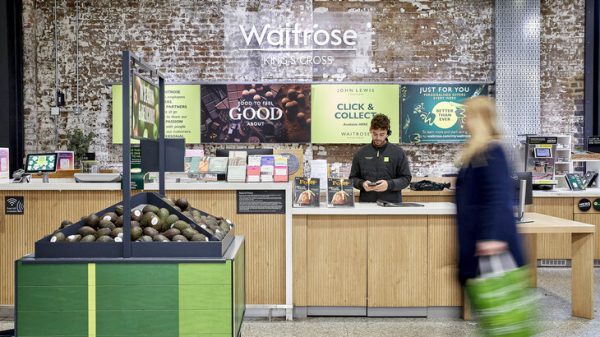The food and drink sector was one of the first to reflect how significantly and suddenly our lives changed at the beginning of the pandemic. As consumers went online to stock up on essentials and replace meals out with specialist food delivery services, sales rocketed. Of all the sectors we monitor, food and drink saw the biggest spike in demand in March 2020.
Fast forward to now, and the retail sector is entering the second half of 2021 in a very different environment. Supermarket queues have subsided and delivery slots are once again available. The government is following its roadmap for lifting restrictions, with many consumers eagerly returning to restaurants and pubs. Now the question facing food and drink retailers is: will the surge in referrals and online orders end as quickly as it started? To find out, we’ve analysed the data from the first quarter this year.
A permanent behaviour shift or short-term trend?
The data continues to look broadly optimistic for food and drink brands. The volume of orders we’ve seen in the food and drink industry has remained high since the beginning of the first lockdown.
In Q1 this year, online orders were up 44 per cent compared to Q1 2020. Referrals were even higher, up 110 per cent year on year. This is especially impressive considering that the referrals in Q1 2021 are higher than the best 3 months of 2020 despite orders dropping fractionally from the peak of 2020 (minus three per cent from Q2 2020).
The past year has increased both the propensity to refer food and drink brands, and the likelihood that these recommendations convert into new customers. In Q1 2021, 15 per cent of customers shared brands in this sector (compared to nine per cent in Q1 2020); making it an industry with one of the highest referral share rates. Better yet, consumers are listening to their friends’ recommendations. One in every three shares delivered a new customer in Q1 2021.
While it’s unsurprising that the first lockdown prompted consumers to buy food and drink online, the data shows this trend isn’t confined to the start of the pandemic. As well as continuing to buy from these online brands, consumers have continued recommending them to others. Even at their lowest point in August 2020, when the UK temporarily eased lockdown, referrals remained up 58 per cent year on year. In early February 2021, almost a year on from the first lockdown, referrals for the food and drink sector were up 307 per cent year on year.
It seems the pandemic has permanently changed consumer habits, with more people incorporating meal kits, delivery services and niche online shops into their food shopping routine. Even now supermarkets and restaurants are readily accessible, consumers continue to seek out – and act on – their friends’ recommendations for online brands in this sector. Businesses that find ways to tap into this continued appetite for online food and drink brands face strong potential for long-term growth.
Cementing brand loyalty and market share
The challenge for online food and drink brands has now shifted from meeting unprecedented demand to understanding – and retaining – customers acquired throughout the pandemic. Uncertainty persists, fuelled by the knowledge that restaurants reopening last year weakened online activity. In August 2020, orders and referrals had decreased by 14 per cent and 17 per cent respectively compared to the previous month. However, these volumes were still significantly higher (±40 per cent) than before the first lockdown. With the numbers suggesting consumers now regularly recommend their favourite online food and drink brands, it looks unlikely that the category will return to how it once was.
At a macro level, the sector reopening means more competition for every brand in this space. Meanwhile, most brands have a limited understanding of who their new customers are, whether they’re buying online or eating in their restaurants. Benchmarking data against previous years is a relatively fruitless task given the huge disruptions and changes we’ve undergone.
The only way to keep customers is through targeted engagement and customer retention strategies that nurture deep brand loyalty. We’ve seen more and more food brands taking this approach, nurturing relationships with target customers through means such as offering at-home meal kits or recipes for lockdown.
Cooking at home, meal kits and delivery all thrived during the pandemic out of necessity. Now that consumers can again choose from an array of eating and drinking options, brands must focus on building strong relationships that instil customer loyalty. Those that fail to do so risk online sales plummeting as rapidly as they rose. For now, the data for this sector remains positive. Only time will tell how loyalties and trends will shift over the coming months.
By Simon Dring, head of retail insights at Mention Me










